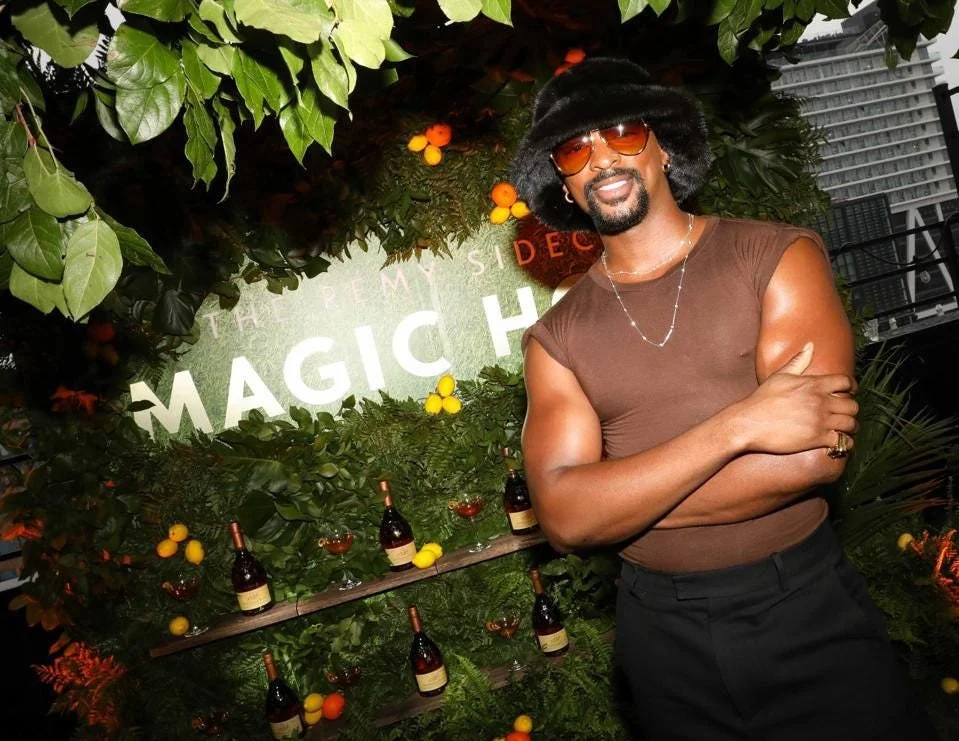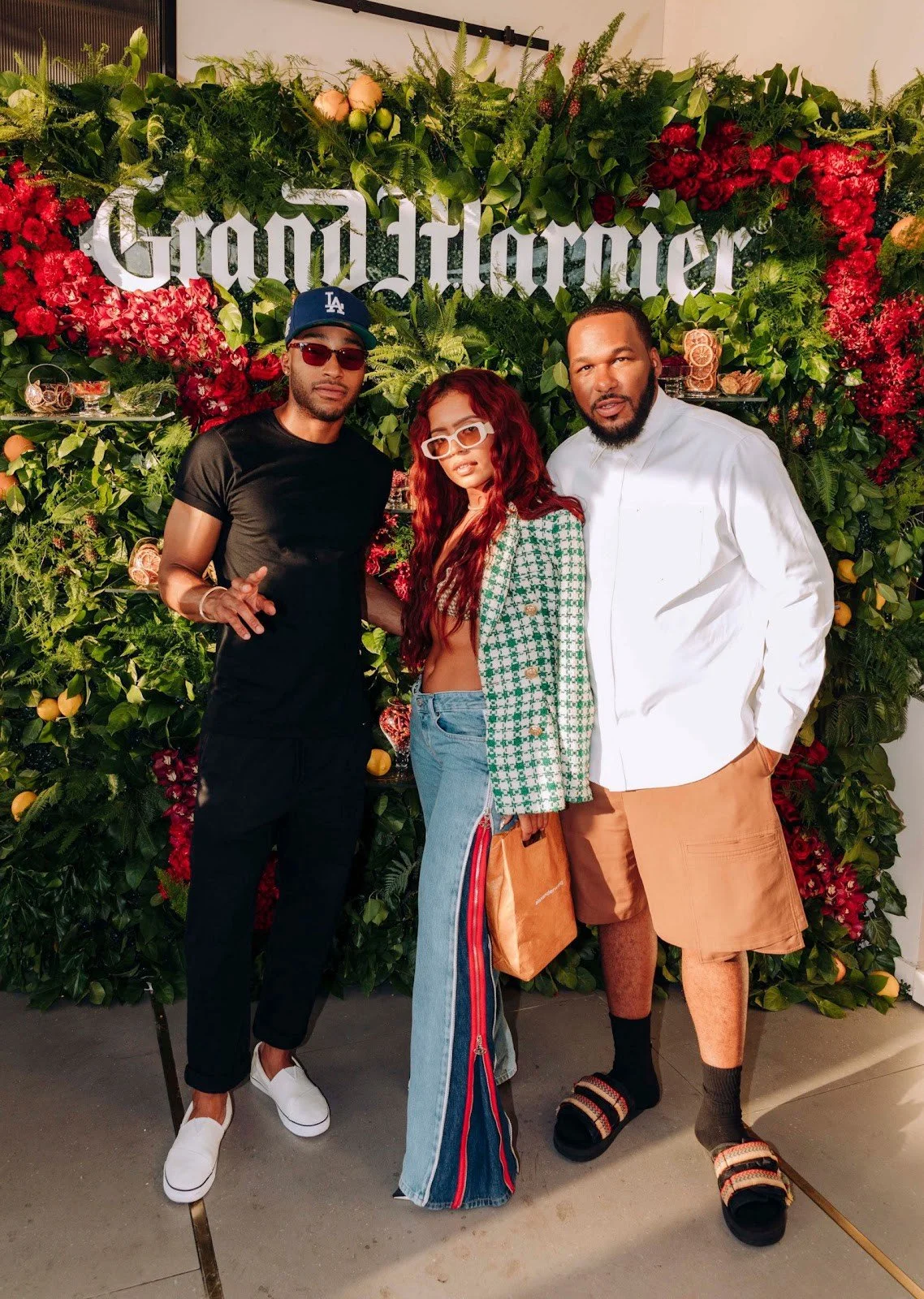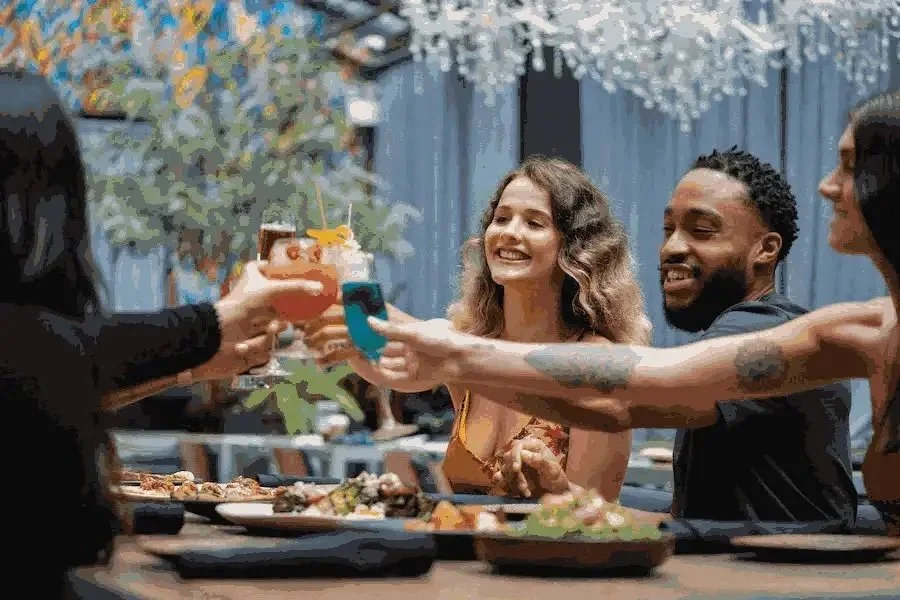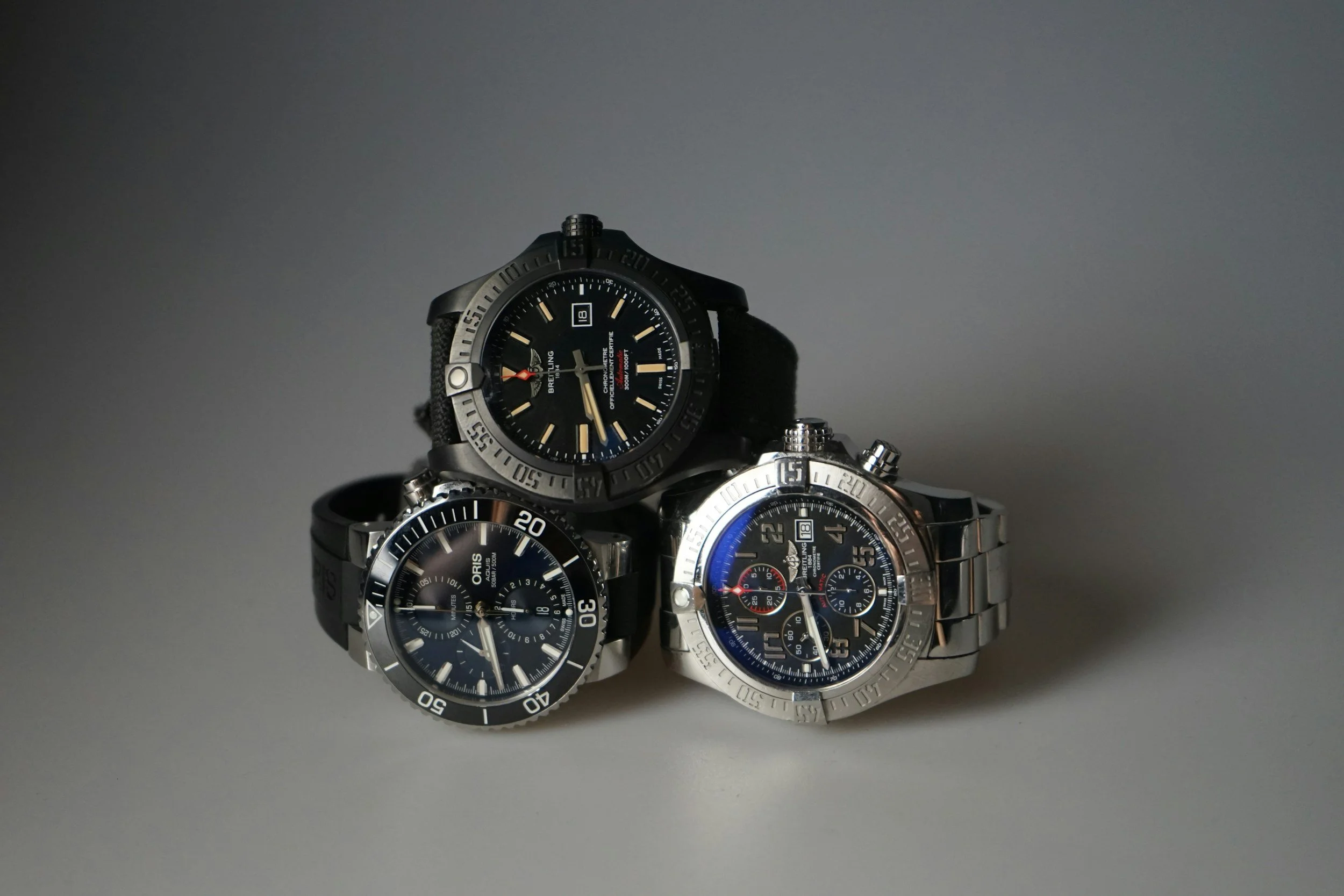The Spirit of Fashion: Claiming The Cocktail As Your Go-To Style Accessory
By Cassell Ferere originally published on Medium.com
In the category of menswear, keen aesthetics are usually based on a deep understanding of personal taste. Knowing what you like helps develop your sense of style. Elevating your style, then, can often be attributed to the selection of a signature accessory – a wardrobe staple. Yet one accessory that is distinct, but often overlooked isn’t a wardrobe piece at all. It’s a cocktail. The right cocktail choice can become your signature accessory and give cache to an expressive style.
First and foremost, I must state that responsible drinking is the most fashionable form of drinking. That said, men of fashion, including stylists, designers, influencers, and tastemakers, are all seemingly settling into the casual cocktail culture. These men are finding inspiration in creating cocktails with personalized flare. Even more so, men of fashion are showing off their sense of style through the distinguished habit of responsible drinking.
After launching his namesake fashion line in 2013, celebrity designer LaQuan Smith crafted the “LaQuan Smith 3D leggings” and became known as the “leggings guy” who would go on to dress celebrities like Beyonce, Rihanna, and Lady Gaga, while displaying his own elegant personal style on his Instagram account. Earlier this summer, Smith collaborated with spirit brand Remy Martin to create ‘the’ summer cocktail, “The Remy Sidecar.”
Smith commented on the collaboration, saying “The campaign is special because it asks us to own the best part of each day in our own ways and celebrates creativity! For me, this happens when the right people, music, drinks, and styles combine.”
In mid-July, stylist and designer Jason Rembert teamed up with spirit brand Grand Marnier, to create a specialized cocktail based on his own personal taste. Rembert and Grand Marnier’s US-based ambassador Xavier Herit concocted the ‘Grand Margarita.’ Dressed in decadent ingredients and garnishes hand-selected by Rembert, the custom cocktail was launched in full-bouquet at the Gansevoort Hotel rooftop in New York City on July 13.
Rembert said, “I think the cocktail is a way a man can express his elevation; that may be the class, the diversity of his palette. The complexity of what makes a simple cocktail great. My partnership with Grand Marnier and making the Grand Margarita is based on maximalism.”
“When I was younger, my palette was limited,” he continued. “As I [grew], I had more experiences in life, and I ate dinner at different tables. I think I got to a place where I was more open. Once you’re open to anything in life, you see the beauty.”
For the past several years, I have been personally married to the "Gin & Tonic," referring to it as my go-to at any bar where I might fluster about what drink to order. It is a drink that is easy to remember, simple to make, and presents an air of sophisticated risk-taking with the palate. Gin & Tonic is a cocktail you can dress up – with cocktail attire or even more formal wear – or dress down, to the tune of a backyard party or dive bar. Most places that serve alcohol serve gin.
Personally, I prefer to drink Hendrick’s brand gin and then Bombay or Tanqueray, in that order, as available. Having an order of operation simplifies the ordering process - a technique I often find takes the pressure off any person or group who might be intimidated by their drink choices.
More so, I have found a drink I can indulge with openly over time, expanding what I already know about Gin as a spirit [one predominantly made from Juniper berries], but dispelling what I had previously assumed about wines and spirits in general.
My father indulged in alcohol throughout my childhood and into my young adulthood, and that environment influenced my drinking habits early on. He sipped Bacardi rum in loose-fitting polo shirts from Lacoste, LeTigre, and Polo, with the buttons undone and the collar spread wide from wear. My first cup was as a teen at a backyard gathering with friends. Nothing new. [Though I do not in any way encourage underage drinking.]
I decided to start again with a clean palate around the age of 21, diving into red wines, and thus replacing the long nights [and longer mornings] I’d had after throwing back “Incredible Hulks” made of Alize liqueur mixed with Hennessy cognac and Long Island Ice Teas – whatever that f***ing means [Future voice] – with a more wholesome experience.
Wine by the bottle was more affordable and would provide a social element that I grew fond of. I often wore a button-down shirt at the time, and it complemented the scene of a younger man consuming a bottle of wine. With a vague sense of sophistication, I attracted those who passed my seat as I sipped, in a way that mixed drinks didn’t. Even friends who I’d convince to go to bars to drink wine with me noticed the gravitas. I didn’t know much about wine at the time, so I always asked for recommendations wherever I went.
I would eventually branch out into other spirits like Belvedere and Patron, per a West Coast influence, and settle on wearing casual t-shirts and canvas sneakers as my go-to style, regretting the V-neck tee. Then came Bourbon, Bulliet being my preferred brand. I would even have a lengthy pour of champagne-sipping moments that further developed my palette – humbly, of course.
I can attribute my shift in tastebuds to the crowds I frequented - that introduced me to luxury aesthetics and fashion. I was doing work then as a photographer and director. Photoshoots would not only be for fashion but usually involved wine and spirits brands. A slew of world-class bartenders and mixologists would offer set-dressed drinks to the production crew as we worked.
Today, I travel the world, maneuvering through locations with a mentality of appreciation. Searching for a cocktail is one of the easiest ways to explore any city, and bars are a place where you can socialize and discover new inspirations.
Sake bars in Japan are hit-or-miss. At one bar, my barkeep, named Kitai, who was an older gentleman, showed me exceptional service in his empty rustic tavern in Osaka. Wearing a sweater with a button shirt underneath, he poured me his choice of Sake and served me some small sushi bites - I had never seen before. This was the “Lost in Translation” moment I always imagined.
I channeled my Bill Murray aesthetic wearing a favorite bomber jacket of mine, while Kitai and I finessed a conversation through our language barriers. We watched sumo wrestling on a native Japanese sports channel, a sport I noticed to be highly regarded in Japanese culture.
At another bar filled with businessmen in loosely dressed suits and service industry workers still wearing their respective uniforms, baseball was the center of attention. Regardless of class level, they all drank sake, alternating between that and Asahi beer.
During my first trip to Jamaica, I was introduced to Wray & Nephew White Overproof Rum. This is an alcohol that you shant consume straight. Wray & Nephew is best served with a mixer and your best beach attire. Most bartenders and patrons suggest a fruit juice blend that complements the open-toed weather and tropic skyline. But rather than sweet, I like the mix of a soda or tonic - like choosing between sandals or barefoot at the beach.
While I was on the island and at the bars, I noticed a glowing green soda bottle behind the clear refrigerator doors. The brand was Ting, a grapefruit soda, and once I tasted the tangy fizz of the liquid, I immediately thought to mix it with the Wray & Nephew Jamaican white rum. Amongst my friends, I named my concoction “The Tun-up,” loosely translated to ‘The Turn Up.’ It speaks for itself.
“The Tun-up” stuck with us on that trip, and it became my preferred cocktail in one of my favorite destinations. I recently visited Jamaica this summer and ordered my special cocktail at every bar, always requesting my secret ingredient, Ting. I would buy each beverage separately by the bottle, skipping barefoot trips to the bar as I tanned in the shade, blocking my eyes with sunglasses.
In 2020, I was introduced to Port wines in Porto, Portugal. I learned the etiquette and history of Port wines and was opened up to the idea of “dessert wines.” Some of these wines date back to the 16th century. These fortified, sweet red wines come from the Douro Valley in Northern Portugal, spanning over into Spain.
I visited the Douro Valley last year during a trip back to Porto while reporting on their Fashion Week and highlighting the Modtissimo fabric trade show. Porto is a hub for high-end fashion production, making garments for some of the most notable brands in the world; Balenciaga, Margiela, Kith, and Pyer Moss, to name a few. The breath of fashion that is overlooked by the industry in Portugal reflected my ignorance of Port wines - thus, being there on assignment to cover the trade show.
The Douro Valley vineyards were worth exploring as some of the oldest vineyards to date, with Kopke wines breaking ground in 1638. I got a crash course on wine-tasting and learned how spirits were made centuries ago and today. I was privy to all that the aficionados and enthusiasts know when they indulge in the beverages of the vineyards.
Though I maintained some sobriety, I appreciated the essence of the wines and spirits. I learned that the ground they cultivate from planting to harvest, the time in the vats, the barrels, and the aging of the liquids to perfection, are all building blocks for the palate. Like with thrift shopping, where the many factors that go into the essence of thrift shops have to do with the care taken beforehand - the vineyards are guarded and harvested through the same process as centuries ago.
I would later venture to a nation-island of Portugal called Madeira. Madeira is where the wines and spirits took me by surprise. All potent, but none more than the infamous Poncha cocktail. Made with orange, lemon, honey, and cane rum from the island, the Poncha cocktail is memorable. We were forewarned by locals to drink only one cup for the day, but this drink gave the phrase “drunk like a sailor” new meaning.
The legend of this cocktail stems from overall-wearing fishermen and a tale that trickles down into your cup via a bartender willing to make the drink for you from scratch. The fishermen who drank Poncha were recovering from the sea they sailed that morning, curing annoying coughs or sniffles. Poncha would open up the air passages in the nose with the pungent aromas, remedying most ailments. The cocktail works as hard as its laborious counterparts in their rubber boots – the fishermen.
Ideally, the cocktail represents a sense of distinction with the added notion of discipline. Cocktails can be dressed up or dressed down, depending on how you feel. How you dress is always about first impressions, and the cocktail you choose can be the second-first impression you make.
Cocktails are pure aesthetic, something to enhance life and add style. Possessing a signature cocktail in your register is a keen and sophisticated trait – never sully, unless one is consuming beyond their drinking limit. The proper cocktail complements a cozy sweater or a blazer jacket as you blossom at a bar over margaritas or highballs with a friend.
Your choice of drink displays your level of distinction in many ways, and how you dress can complement that. Your style of dress – your look, the feel – are all representative of your character. Compare yourself to the quintessential ‘Bond’ character who might order a Martini – in the most dapper tailored suit, of course – and drive an Aston Martin. When paired with the right aesthetic, the cocktail is an accessory that can speak for us and fosters a sense of style for others to admire.

















